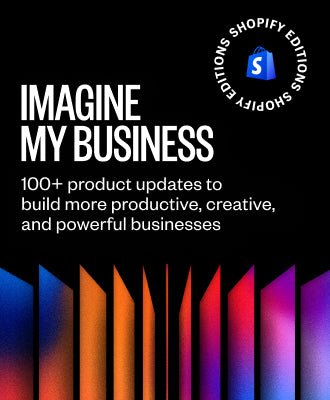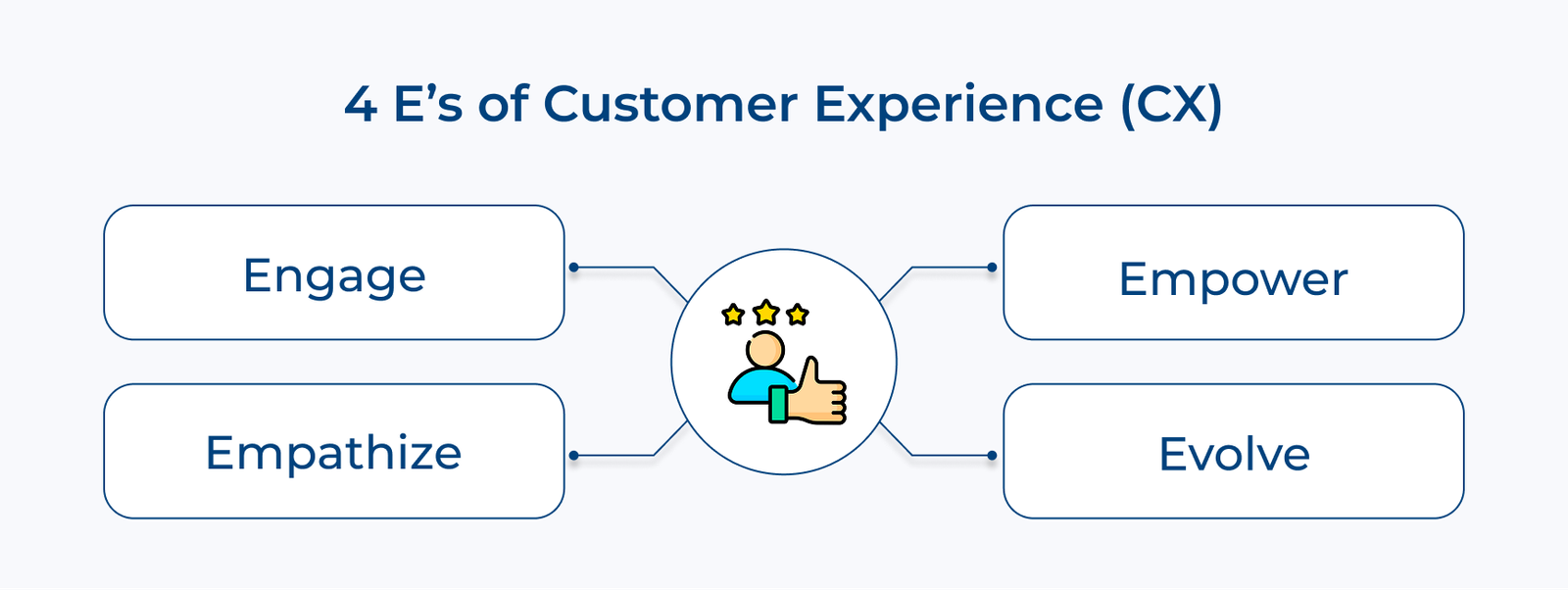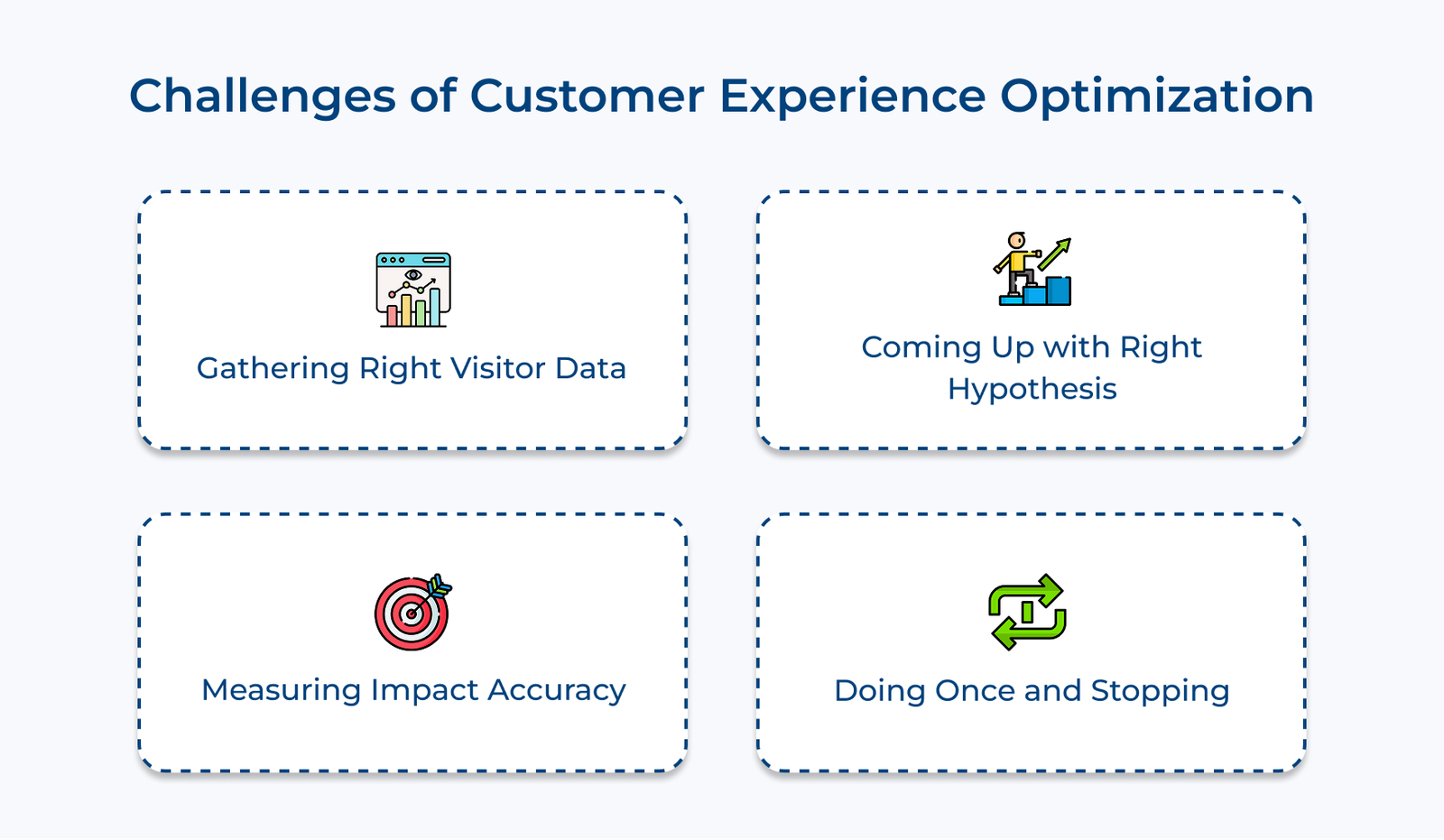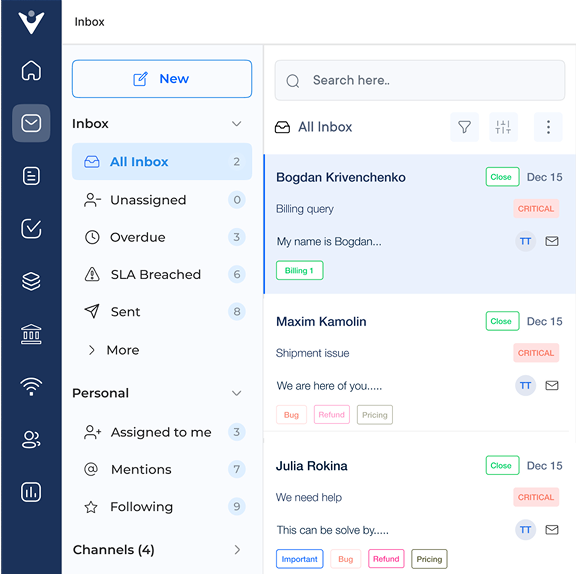1. Understand Customer Journey
Understanding the customer journey means charting every touchpoint a customer has with your brand, starting from initial awareness and continuing through post-purchase support. The holistic view offers valuable insights into the customer’s perspective.
Businesses can uncover and resolve any gaps or inefficiencies that may disrupt a smooth experience by thoroughly understanding the customer journey. The knowledge enables companies to streamline processes and anticipate customer needs.
How to implement:
- Customer feedback: Gather feedback through surveys, interviews and social media to understand customer perceptions.
- Journey mapping workshops: Hold collaborative workshops with cross-functional teams to outline the complete customer journey and pinpoint areas for enhancement.
- Analytics and data: Utilize customer data to obtain quantitative insights into behaviors, preferences and challenges faced by customers.
2. Know Purchase Motives
The step involves gaining insights into the psychological, emotional and practical factors that drive a customer’s decision to purchase a particular product or service. Understanding customer motives can assist businesses in more effectively aligning their marketing, sales and customer strategies. It helps to meet the specific needs and expectations of their target audience. Some of the use cases are:
- A luxury skincare brand found that a significant number of its customers were driven by a desire for self-care and indulgence. It led them to enhance their product messaging and in-store experiences to cater to the aspirational mindset.
- A fitness apparel company found that a significant portion of its customers valued sustainability and ethical production practices. It led them to emphasize their eco-friendly initiatives and the transparency of their supply chain processes.
- A technology company discovered that its customers valued efficiency and productivity above all else which led them to emphasize the time-saving features of their products.
- A travel company realized that a significant number of its customers were in search of adventure and fresh experiences. It resulted in the development of unique and immersive travel packages tailored to the desire.
Pro tips:
- Conduct customer surveys to gather direct feedback on purchase motives and preferences.
- Examine customer data, including buying habits, demographics and online behavior, to uncover trends in customer motivations.
3. Hypothesize New Ways To Improve Visitor Experience
The step includes generating creative ideas and strategies to improve the customer journey, from the first interaction to post-purchase support. Start by gathering insights from various sources, such as customer feedback, surveys, analytics data and industry trends. Inspire your team to think outside the box and question current assumptions.
Conduct customer journey mapping exercises to identify pain points and areas for improvement. One potential idea might be to introduce a virtual assistant or chatbot that offers 24/7 support and tailored recommendations. It could streamline the customer service process, reduce response times and enhance satisfaction.
Its importance:
- Enhanced customer satisfaction: You demonstrate your commitment to meeting customer expectations by seeking new ways to improve visitor experience.
- Competitive advantage: Creative solutions can set your brand apart and provide a distinctive customer experience. It sets you apart from competitors and attracts new customers.
- Increased efficiency: Optimizing customer experience can lead to operational efficiencies. It reduces costs associated with customer complaints, returns and support inquiries, improving profitability.
4. Test For The Perfect Experience Across Channels
Customers expect seamless and consistent interactions with brands, regardless of the channel they choose to engage with. Evaluating the customer experience across multiple channels such as websites, mobile apps, social media and physical stores can help businesses ensure a seamless experience.
A retailer could evaluate the online checkout process, mobile app usability and in-store pickup experience to pinpoint any friction points or inconsistencies. Streamlining the processes across channels can help customers enjoy a seamless shopping journey.
Best practices:
- Continuous testing and iteration: Consistently test and collect customer feedback across all channels to pinpoint areas for enhancement. Embrace a culture of continuous optimization.
- Omnichannel data integration: Integrate customer data from various channels to gain a comprehensive understanding of their behavior and preferences. It enables personalized and consistent experiences.
- Cross-functional collaboration: Engage teams from various departments, including marketing, customer service and IT. It ensures a holistic approach to testing and optimizing the customer experience across channels.
5. Emphasize Consistency
The step involves ensuring that customers receive a uniform experience across all touchpoints and channels. When customers are aware of what to expect, they feel more at ease and appreciated. The sense of familiarity can lead to increased customer satisfaction, loyalty and advocacy.
Consider a hotel chain that emphasizes consistency across its properties. Guests experience a seamless experience, from the check-in process to room amenities and loyalty programs. Consistency strengthens the brand’s commitment and instills a sense of comfort in customers.
Best practices:
- Define and document standards: Set clear guidelines for customer interactions, processes and service delivery across every touchpoint. Ensure that the standards are well-documented and accessible to all employees.
- Train and empower employees: Implement comprehensive training programs to ensure employees have the knowledge and skills needed to provide consistent experiences. Empower them to make decisions that align with the brand’s standards.
6. Focus on Improving Content
Focusing on improving content is a crucial step in optimizing customer experience. Offering high-quality content can help you draw in and keep customers.
Enhancing content can involve refreshing website copy, crafting informative blog posts, refining product descriptions and producing engaging social media updates. The efforts help to educate, inform and entertain customers, leading to a positive experience with the brand.
Pro tips:
- Conduct regular content audits to identify areas for improvement and ensure consistency across all channels.
- Use customer feedback to understand what content resonates with your audience and tailor your content strategy.
- Consider hiring professional copywriters to enhance the quality of your content and leave a lasting impression on customers.
7. Use Personalization as a Strategy
69% of companies rated personalizing the customer experience as a top priority. Customizing content for individual customers allows businesses to create a more personalized experience that connects with them on a deeper level. There are various ways to implement personalization to optimize customer experience, such as:
- Personalized email campaigns
- Website content
- Product recommendations
- Customer service interactions
Personalization enhances the customer experience by making individuals feel valued and recognized. It allows businesses to deliver relevant content, recommendations and offers that are tailored to each customer’s preferences.
Best practices:
- Analyze customer data to understand preferences and behaviors.
- Segment customers based on their characteristics and behaviors to deliver targeted personalized experiences.
- Regularly evaluate personalization strategies to ensure they are effective and relevant for customers.
8. Gather Customer Feedback – Rinse & Repeat
The step focuses on consistently collecting feedback from customers and leveraging those insights to enhance their experience. It’s like having a never-ending conversation with the people who matter most to your business.
Actively listening to your customers can help you gain a deep understanding of their needs, preferences and pain points. The feedback can help inform your decisions on improving your products, services and customer journey. It’s like having a secret weapon to stay ahead of the game.
Pro tips:
- Make it easy: Provide multiple channels for customers to share their feedback, such as online surveys, social media or in-person interactions. The more convenient it is, the more likely they’ll participate.
- Close the loop: Don’t just gather feedback – act on it! Inform your customers that their feedback has been acknowledged and that changes have been made in response to their suggestions. It builds trust and shows you truly value their opinions.
- Incentivize participation: Think about providing small incentives or rewards to customers who take the time to share their feedback. A little appreciation can go a long way in encouraging engagement.
Challenges of Customer Experience Optimization
Let’s talk about the challenges that come with optimizing customer experience. It’s not always a walk in the park. Understanding the hurdles can help you tackle them head-on.

















